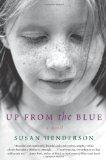Summary | Excerpt | Reading Guide | Reviews | Beyond the Book | Read-Alikes | Genres & Themes | Author Bio

A Novel
by Susan HendersonThis article relates to Up from the Blue
In 1954, the United States Supreme Court handed down its judgment for Brown v. Board of Education, Topeka, Kansas. In their landmark unanimous (9-0) decision, the Court stated that "separate educational facilities are inherently unequal", and thus ruled segregation to be a violation of the Equal Protection Clause of the 14th Amendment of the US Constitution. This ruling overturned the Plessy v. Ferguson "separate but equal" decision of 1896 which had reinforced segregation, paving the way for integration and the civil rights movement.
Despite the Supreme Court's ruling, by the late 1960s many schools remained effectively segregated due to demographic and socio-economic issues and, in some instances, purposeful manipulation of school boundaries. Thus, from the late '60s onwards, a number of courts mandated that children should be bussed to schools outside their neighborhood. Supporters of "desegregation bussing" argued that integration would provide minority students with equal access to equipment, facilities and resources thus providing an equal educational opportunity for all students in the area.
Of course, as with most issues during the Civil Rights Movement, desegregation busing was not without its protestors and opponents. The term "forced busing" came into use in many cities that were under court-order to bus children. Boston, Cleveland, Kansas City, San Francisco, Detroit and Wilmington were among the cities under court order to bus children.
Across the country, busing programs were not well-received by either the black or white communities. Legislating action is one thing, but legislating attitude is quite another. According to an early 1970s Gallup poll, just 4% of whites and 9% of blacks supported busing outside of local neighborhoods. In many large cities, whites who could afford to moved to the suburbs, where the population was predominantly white. Because most of the people left behind in the inner-city neighbourhoods after the "white flight" were of lower income, many cities lost a significant portion of their tax base. As the inner-cities became poorer, less money was filtered towards education, with the result that blacks and other minorities, who could afford to, moved out as well - thus the inner-cities became even poorer.
By the early 1990s, most school districts had been released from court supervision and ceased using mandatory busing to try to desegregate schools, but many school districts today encourage students to attend schools outside of their neighborhood through initiatives such as magnet schools. In 2004 The Civil Rights Project reported that desegregation of public schools in the USA peaked in 1988 and that resegregation has occurred in many areas since.
Filed under Society and Politics
![]() This article relates to Up from the Blue.
It first ran in the November 17, 2010
issue of BookBrowse Recommends.
This article relates to Up from the Blue.
It first ran in the November 17, 2010
issue of BookBrowse Recommends.
Your guide toexceptional books
BookBrowse seeks out and recommends the best in contemporary fiction and nonfiction—books that not only engage and entertain but also deepen our understanding of ourselves and the world around us.